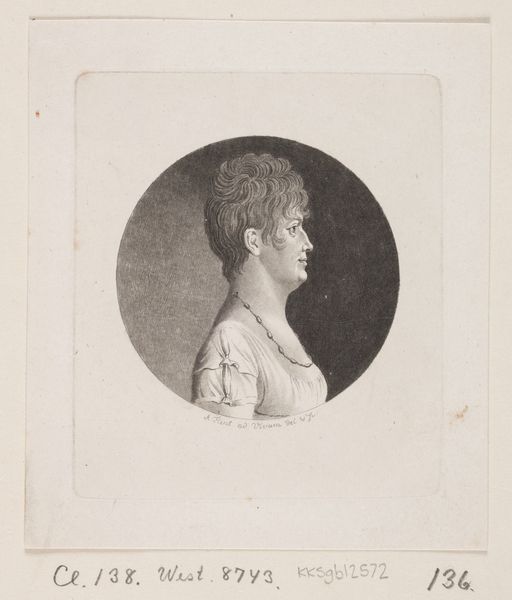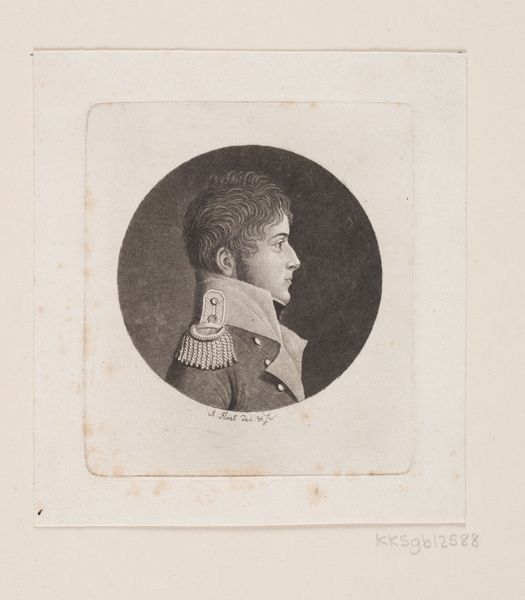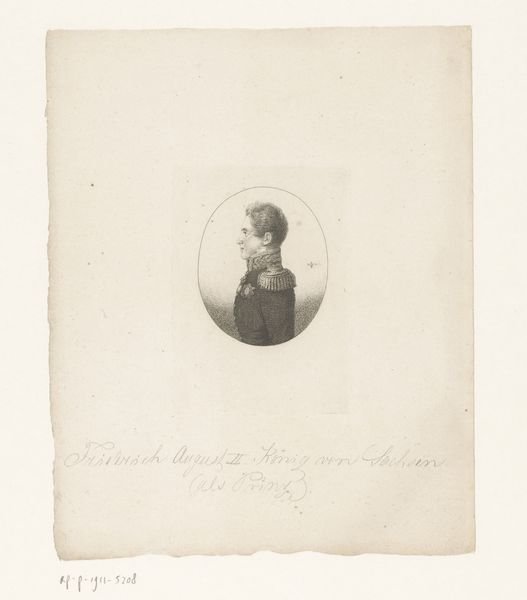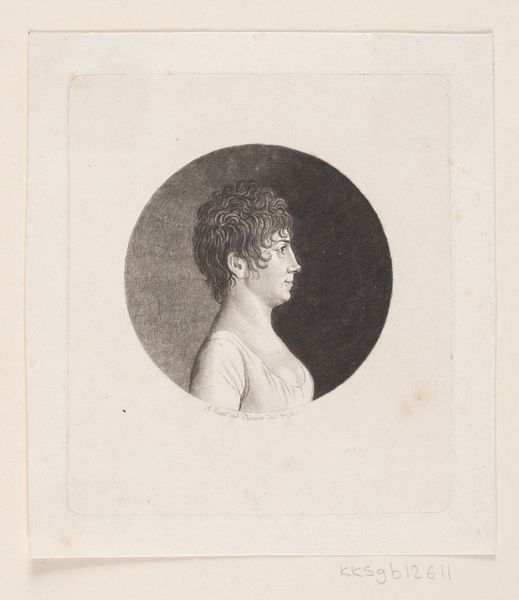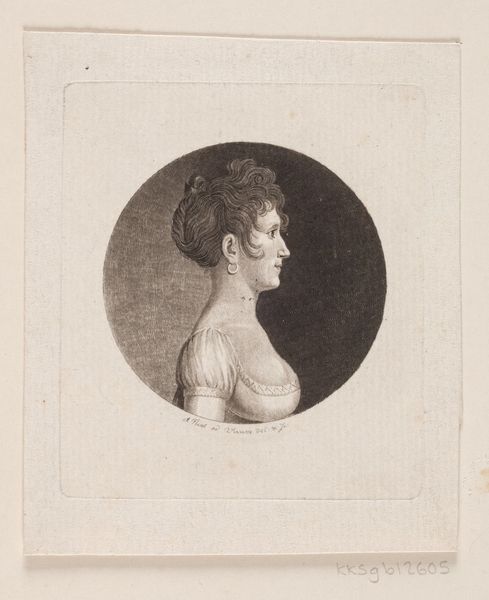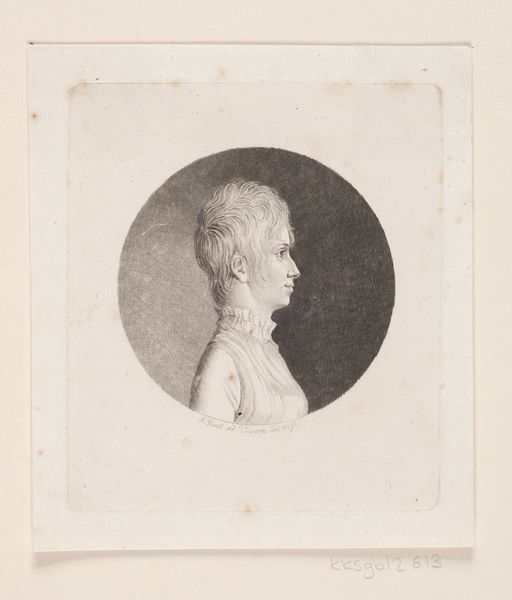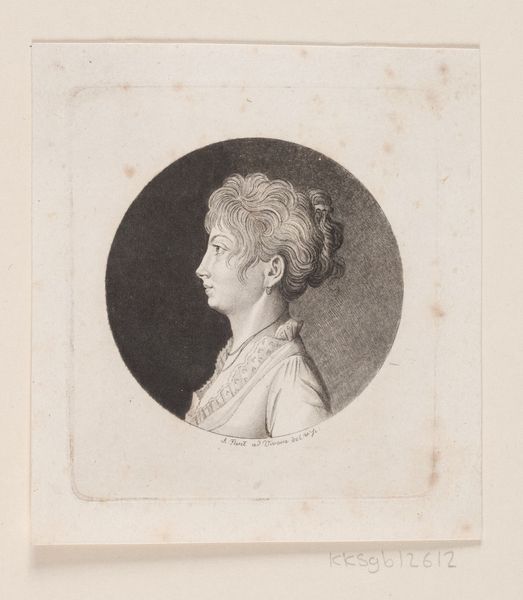
#
photo of handprinted image
#
shape in negative space
# print
#
white clean appearance
#
repetition of white
#
white palette
#
charcoal drawing
#
tonal art
#
repetition of white colour
#
remaining negative space
#
positive shape
Dimensions: 60 mm (None) (billedmaal), 85 mm (height) x 74 mm (width) (plademaal)
Curator: This is "Ubekendt kvindeportræt," or "Unknown Woman's Portrait," a print created sometime between 1767 and 1824. It's part of the collection here at the SMK, Statens Museum for Kunst. Editor: It's so stark! The dramatic contrast between the dark oval and the woman’s pale profile really commands attention. What sort of printmaking process created this effect? Curator: The subtlety in the tonal gradations suggest it might be mezzotint or aquatint—techniques allowing for velvety blacks through textured plates. The material would dictate the number of impressions, affecting availability and audience. Editor: Looking at the woman's face, I can't help but notice the elaborate hairstyle; that coiled arrangement speaks of status and adherence to a particular ideal of beauty at the time. Those little curls convey such gentility and high societal standing. Curator: Absolutely. This image, reproduced through printmaking, enters into the system of disseminating such ideals, reinforcing class distinctions through its accessibility and consumption by particular demographics. How do production and reproduction solidify a certain visual language around social standing? Editor: It makes me think about the power of these portraits to communicate and perhaps construct identity. Who was this woman, and what messages did she want to convey, or was encouraged to project, about her social role through these visual symbols? Curator: And how does printmaking democratize or commercialize these images? Was this print circulated widely, further cementing her image within society's consciousness? Or was its scope more limited, tied perhaps to a specific community or familial network? The circulation itself gives meaning. Editor: The image invites us to consider the complex relationship between material culture, identity, and social power in late 18th and early 19th century portraiture, a lasting icon representing her time and milieu. Curator: Indeed, a fascinating study in the interplay of artistic technique, social communication, and historical documentation!
Comments
No comments
Be the first to comment and join the conversation on the ultimate creative platform.


